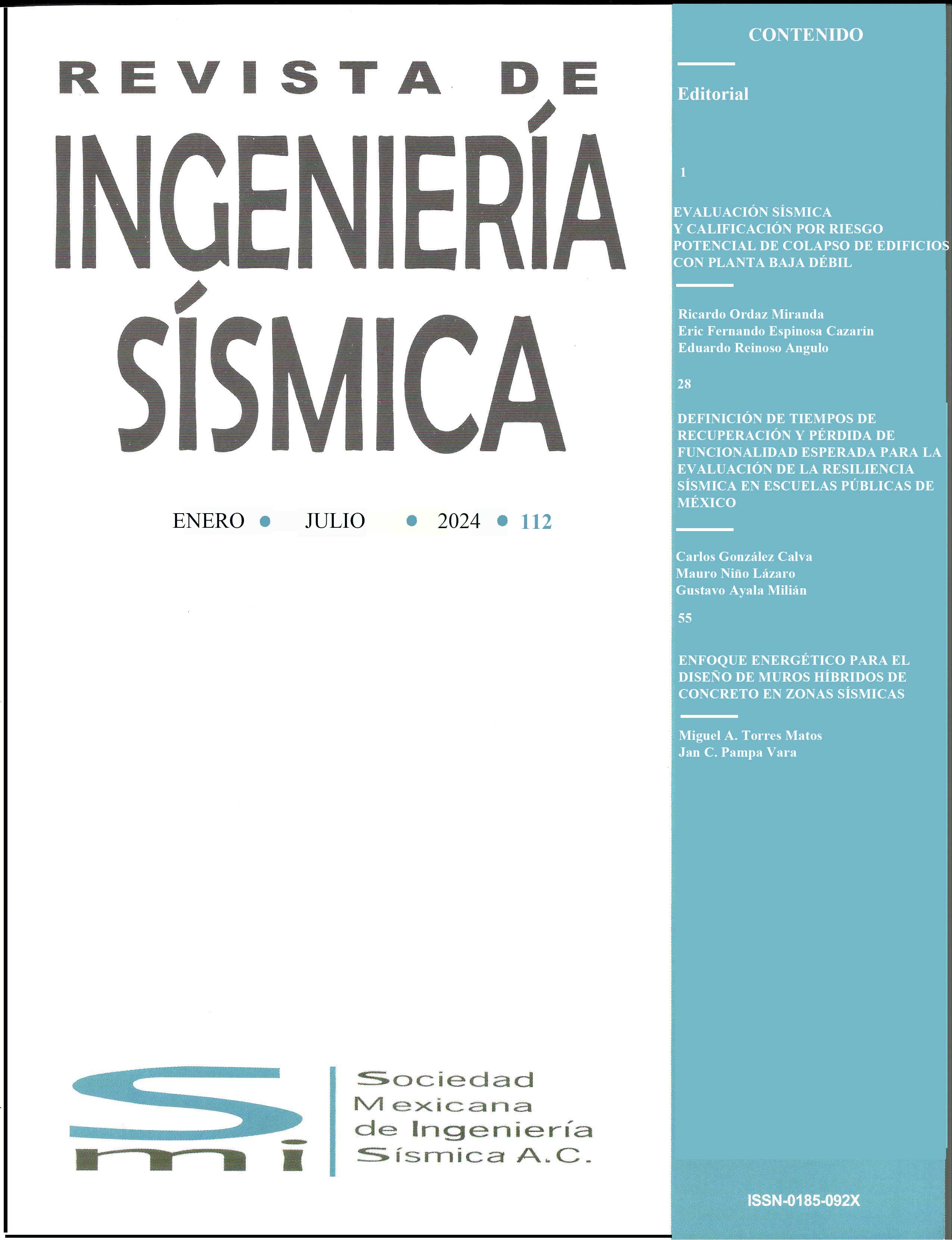BEHAVIOR OF STEEL STRUCTURES DURING EARTHQUAKES OF SEPTEMBER 2017
DOI:
https://doi.org/10.18867/ris.101.499Abstract
In this paper the seismic behavior of some steel structures under the demands imposed by earthquakes of September 2017. The attention is focused on two performance levels: structures with structural damage and structures with damage in non-structural elements. The paper reports the acquired experience about the behavior of steel structures in order to emphasize the lessons of general interest to the structural engineering community.Downloads
References
Basha, H S y S C Goel (1996), “Seismic resistant truss moment frames with ductile vierendeel segment”, Memorias, 11 World Conference on Earthquake Engineering, Paper No. 487 ISBN: 0080428223.
Bertero, V V, J C Anderson y H Krawinkler (1994), “Performance of steel building structures during the Northridge earthquake”, Report No. UCB/EERC-94/09. Earthquake Engineering Research Center, University of California at Berkeley.
Bibiano, F (2018), “Evaluación de la respuesta sísmica de un edificio de acero”, Proyecto terminal, Universidad Autónoma Metropolitana – Azcapotzalco. Marzo.
Chao, S H y S C Goel (2008), “Performance-based plastic design of special truss moment frames”, Engineering Journal, Second Quarter, pp. 127 – 150.
García, J S y E Tapia (2019), “Respuesta inelástica de marcos dúctiles con contraviento concéntrico”, Revista de Ingeniería Sísmica, SMIS. No. 100. Pp. 51-70. DOI: 10.18867/ris.100.478
Kim, J y J Park (2014), “Design of Special Truss Moment Frames Considering Progressive Collapse”. International Journal of Steel Structures. Vol. 14, No. 2, pp. 331-343. DOI: 10.1007/s13296-014-2013-1.
Mazzoni, S, F McKenna, M Scott y G Fenves (2006). Open system for earthquake engineering simulation, user command-language manual, Report NEES grid-TR 2004-21. Pacific Earthquake Engineering Research, University of California, Berkeley, CA.
NTC-DS-04 (2004), Normas técnicas complementarias para el diseño por sismo, Gaceta Oficial de la Ciudad de México, Décimo cuarta época, Tomo II. No. 103-Bis. Ciudad de México.
NTC-DS-17 (2017), Normas técnicas complementarias para el diseño por sismo, Gaceta Oficial de la Ciudad de México, Vigésima época, No. 220 Bis, diciembre.
NTC-DCEA-17 (2017), Normas técnicas complementarias para el diseño y construcción de estructuras de acero, Gaceta Oficial de la Ciudad de México, Vigésima época, No. 220 Bis, diciembre.
Osteraas, J y H Krawinkler (1989), “The Mexico Earthquake of September 19, 1985 – Behavior of Steel Buildings”, Earthquake Spectra, Vol. 5, No. 1. Pp. 51 – 88. DOI: 10.1193/1.1585511
Tapia, E y A Tena (2001), “Comparación de los efectos observados durante los sismos de México (1985), Northridge (1994) y Kobe (1995) y su impacto en las Normas de Diseño para Estructuras Metálicas del RCDF-2001”, Memorias, XIII Congreso Nacional de Ingeniería Sísmica, ID. IV-08. Guadalajara, Jal. Noviembre.
Tapia, E, J S García, y A Del Rincón (2016), "Estudio paramétrico del modelado inelástico de contravientos", Revista de Ingeniería Sísmica, SMIS. No. 94. Pp. 49-74. DOI: 10.18867/ris.94.364 .
Tapia, E y J S García (2020, en prensa), “Damage assessment and seismic behavior of steel buildings during the Mexico earthquake of 19 September 2017”, Earthquake Spectra, Vol. 36, Issue 1.






